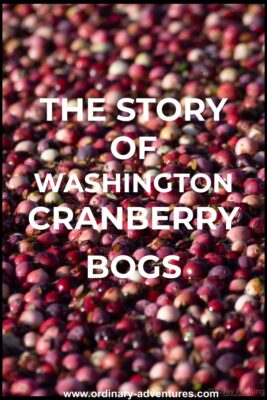Inside the Washington Cranberry Bog
Last Updated on August 22, 2021
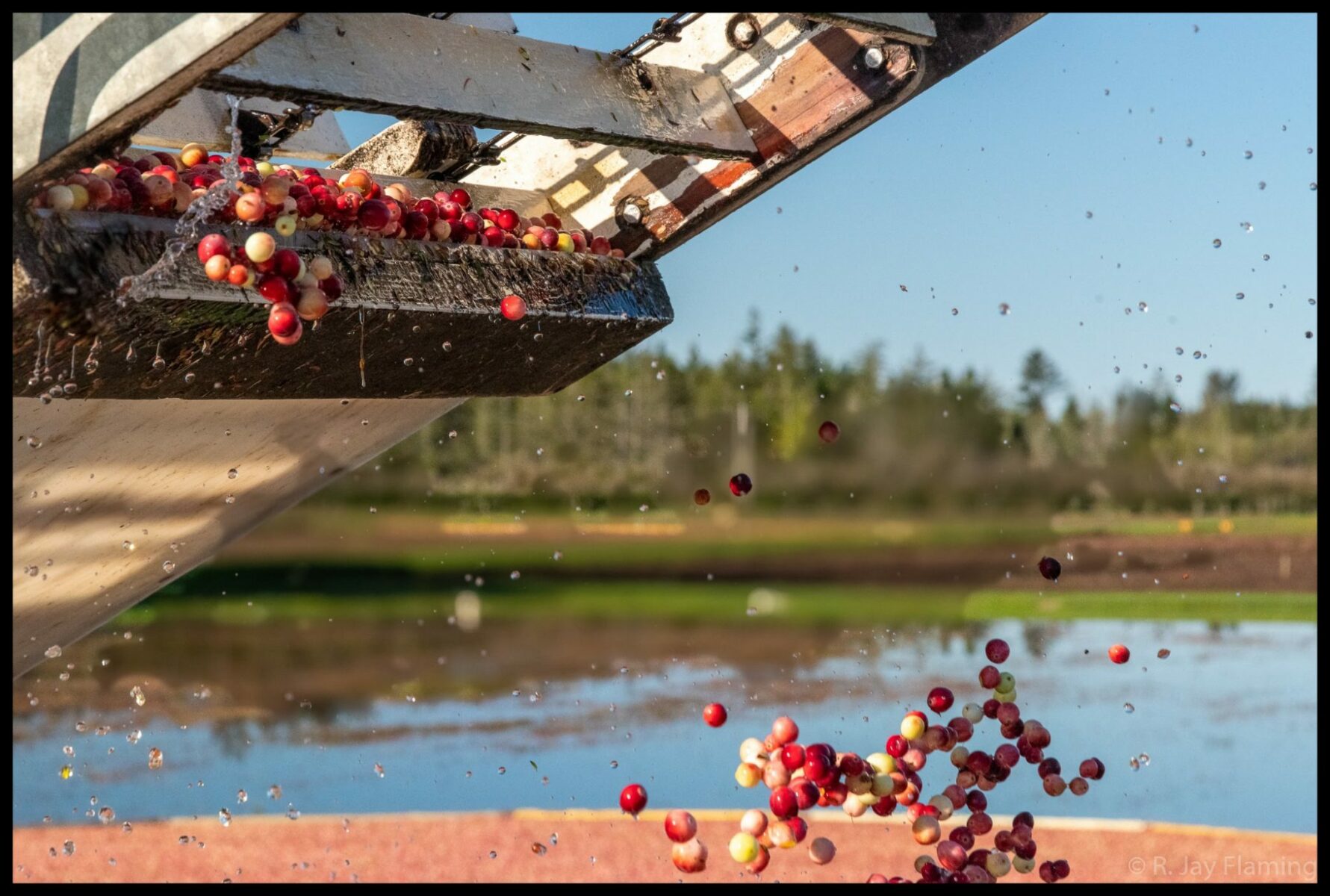
“Go ahead, eat one!” Jessika, part time cranberry farmer, full time nonprofit leader, encouraged me to pop a ripe cranberry in my mouth. Just eating a plain cranberry off a vine in a Washington cranberry bog is something I never considered before. Until recently, my knowledge of cranberries barely extended beyond the cheerful bright berry packaged in plastic and headed right for my freezer to wait for an evening or weekend of inspiration for holiday treats (like cranberry syrup leading to cranberry cocktails).
I’m a city dweller who spends a lot of time outside and cares about my food. I make an effort to eat local food that’s in season. Still, I feel very separated from the story of my food, where it comes from, who grows it, how it grows. As I learn about Washington’s crops and food web, I’ll continue to share it here. So far, I’ve learned about asparagus and peaches, and there will be more local foods coming! Today we’re diving into Washington’s cranberries, that cheerful, colorful berry loaded with anti-oxidants and vitamins, just in time for the holidays! The Long Beach Peninsula Visitor’s Bureau hosted us for a recent visit, however all opinions are my own.
Washington is the 5th largest producer of cranberries in the US, and cranberries are native to Washington state where they enjoy bogs and marshes. They have been cultivated on the Long Beach Peninsula and other parts of southwest Washington since the late 19th century. Cranberry farming has historically been a challenging crop; traditionally they are eaten only around winter holidays, especially Thanksgiving. In addition, cultivating cranberries requires careful management of pests, weeds and frost which has been fine-tuned for generations.
The conventional, larger cranberry farms are all part of the Ocean Spray Co-op, which developed the cranberry juice cocktail to increase the market for cranberries away from holiday meals exclusively in the 1930s. Today, most of the cranberries consumed in the US are in the form of juices or dried, although the berry itself and the cranberry jelly (you know, the one that’s round and has rings from the can!) are heavily consumed the week of Thanksgiving!
What happens in a Washington Cranberry Bog?
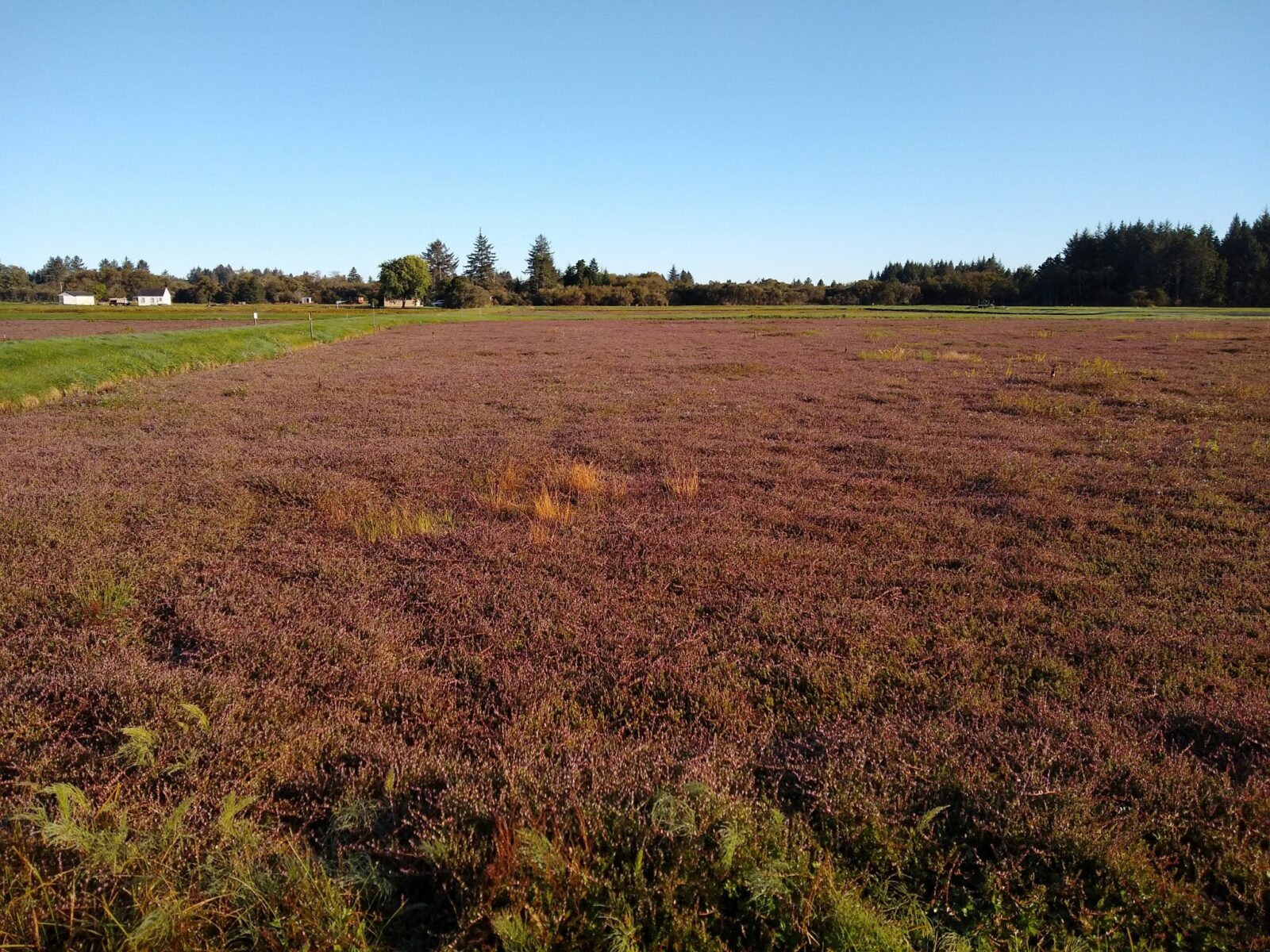
At first, when you approach a Washington cranberry bog, it doesn’t look like much (unless it’s the day of harvest and it’s flooded, then it’s super colorful and dramatic). It looks like a slightly lower area of vines with weeds here and there. It has a reddish tinge but isn’t exactly red. When you get up close to it, however, the bright red berries start to pop out between the vines and once you see them you see them everywhere! This is a place where you have to look closely at the details so you don’t miss it. This is what the bogs look like most of the time.
Cranberry vines go dormant for the winter, then blossom in the spring and grow their bright red berries over the summer. By fall, they are ready to harvest! When we visited Washington’s largest cranberry farm, they were starting their 7 weeks of harvesting each bog. Some bogs are harvested using the dry method (which just means they are picked similar to other berries), but many are harvested using the wet method, which you might have seen in an Ocean Spray commercial or in other pictures of cranberry bogs. We were lucky enough to get to experience the harvest of a cranberry bog from start to finish!
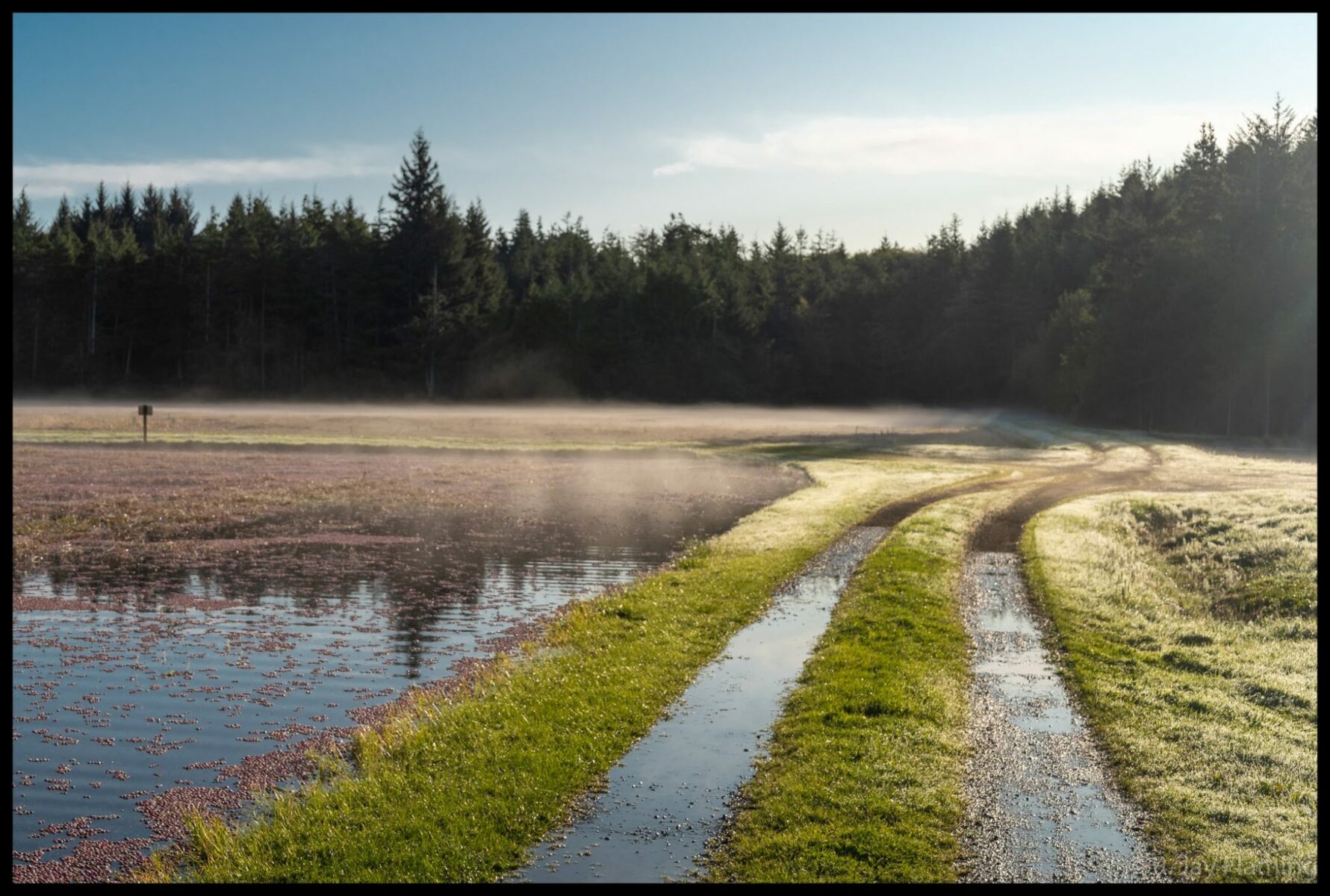
The first step in the wet method is to flood the bog. This happens the night before the bog is to be harvested and generally the water in the bog is about 18 inches deep. The next step is for the beater (a type of tractor specifically for cranberry harvesting) passed through the bog and big paddles “beat” the berries off the vines, which causes them to float up to the surface of the water. Cranberrries and their vines can stand up to this treatment, making it easier to harvest once the beating is done.
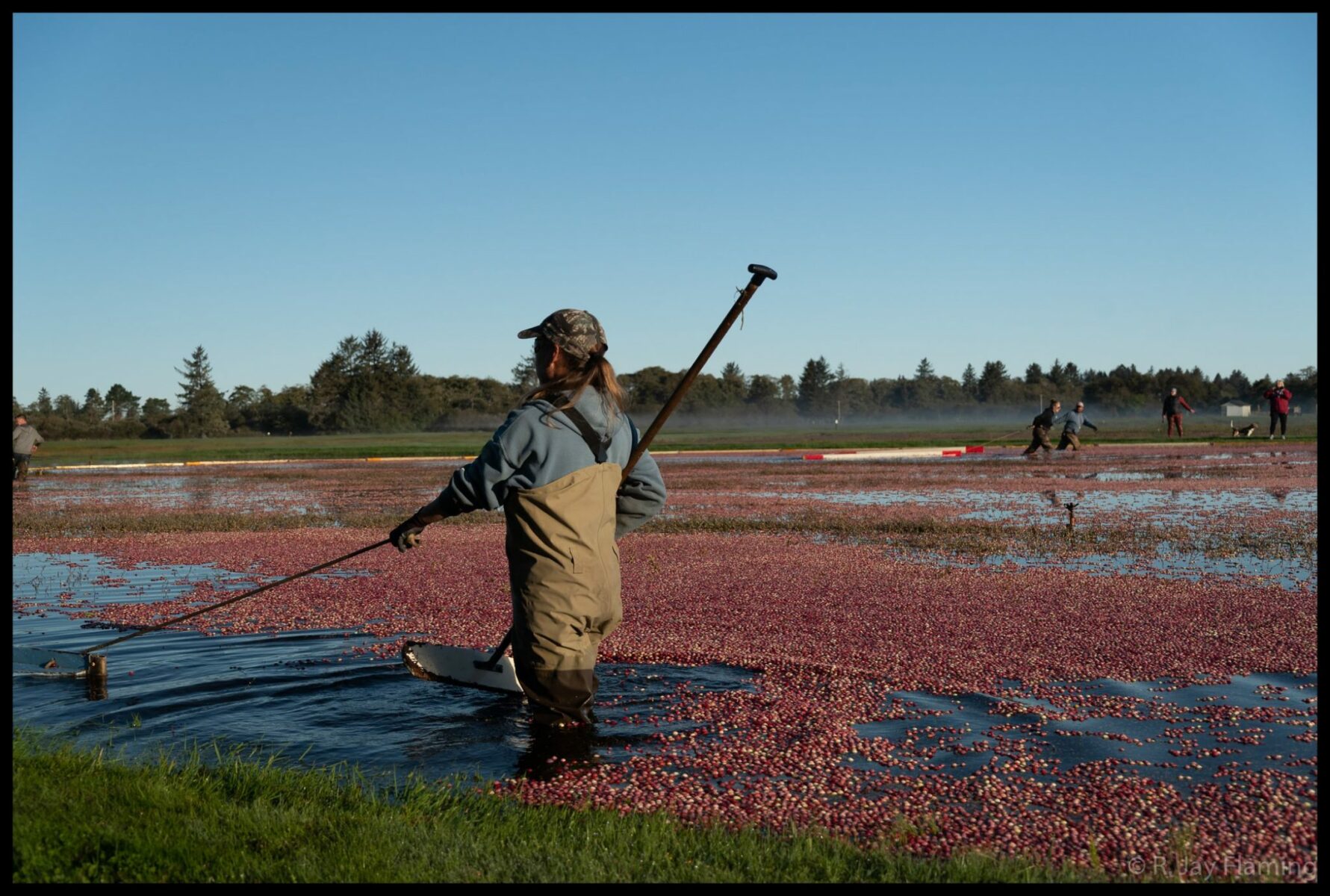
Then, the elevator gets fired up and moves the berries up to be loaded onto the trucks to go to market.
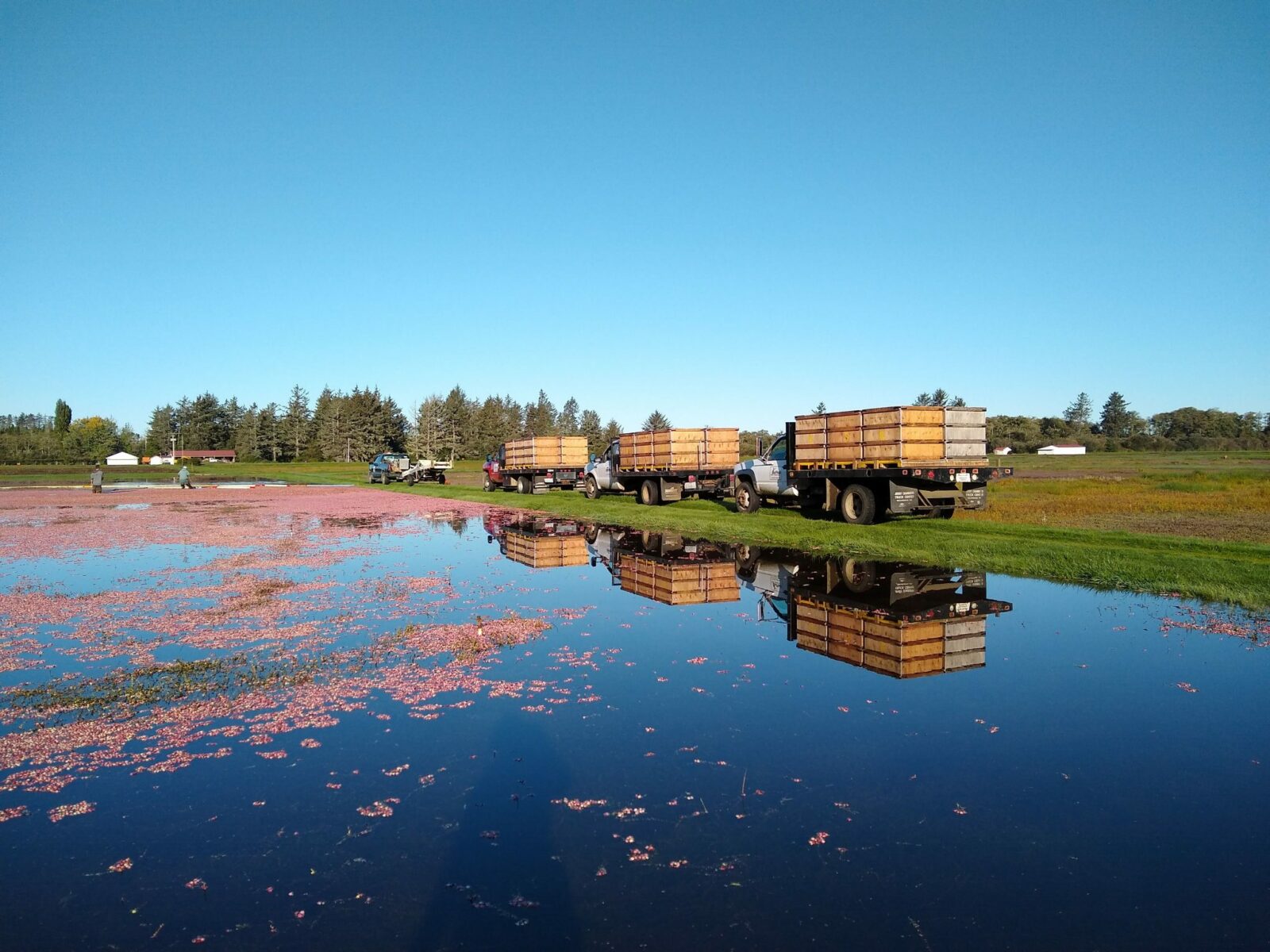
While this was going on at one of the large, conventional farms, we had the opportunity to visit a small, organic cranberry farm surrounded by native pollinating plants. We got to meet Jessika, who encouraged us to sample the berries. She farms this small farm with her partner and his parents. When they took over this small farm in 2010, they were told by other cranberry farmers that organic cranberry farming just wasn’t possible. Not ones to back down from a challenge, and dedicated to organic farming methods and connection to the land, Jessika and Jared did it anyway. Organic cranberry farming is really hard because it has all the challenges mentioned above, without the use of traditional farming practices such as pesticide making it even more difficult.
Pests and weeds are a bigger problem which therefore make their yield per acre much smaller than it is on conventional farms. Their delicious organic berries aren’t available to buy by themselves, to get your hands on them, you’ll have to try one of the other businesses they sell too, like the absolutely incredible Cranberry Liqueur (seriously this is so, so good). If you can’t make it to Long Beach to buy some at Adrift Distillers, you can also get it at Total Wine and More locations around Western Washington! They also support other farmers who are working towards becoming organic in Washington and Oregon.
This holiday season you’ll know more about the story of these bright berries and where they come from!
